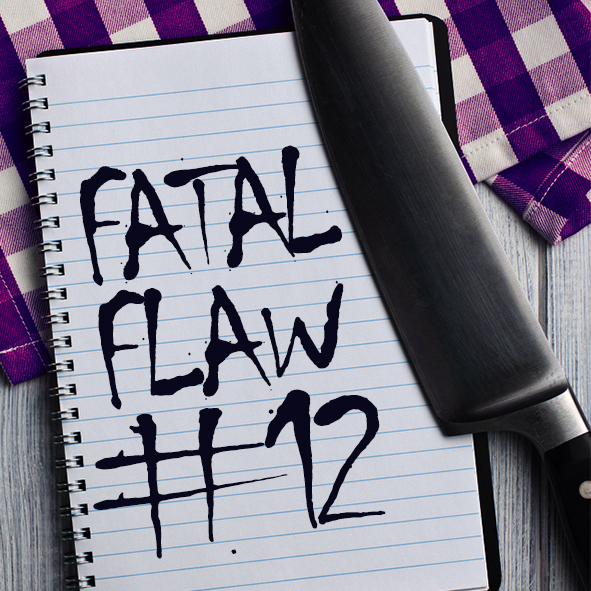Plot and Subplots in a Series of Scenes
Ah, now we are getting somewhere, some of you may be thinking. We are finally going to look deeply at plot after taking a long dip into the four essential corner pillars of novel construction. In this year-long course I’m doing on this blog, we’re going to be looking at 12 pillars in all, and we are now on #5.
A great, strong plot is essential for building a terrific novel. There is no excuse for a writer of any novel to sacrifice good plot for the sake of anything—art, character study, or an important message. Without plot, you have no story. Period. So don’t misunderstand me if I appear to underemphasize plot at times.
Yes, I’m a “character-driven” novelist. The heart of my novels centers on my characters—what they need, want, fear, and strive for. I feel every novel must be character-driven in that way. But not at the expense of good plot. If you’ve had your manuscript critiqued by me, you’ll know I’m a real stickler about strong plot. Every little bit of every scene has to serve the needs of the plot.
So, What Is Plot?
But what is plot? I said this in an earlier post: plot isn’t one of the four essential corner pillars of novel construction. Why? Because plot is the vehicle for the other pillars. Plot is what happens in a string of scenes, once scene after the other. Plot itself isn’t a pillar of novel construction, but the way scenes are constructed to unfold the plot is.
To veer away from my construction theme, think about plot as a train trip. Scene 1 is the departure station. Your story begins on page 1 with an opening scene. Your novel ends at “The End”—the final scene, the destination point. Each scene might be likened to a stop along the way, one stop after another, that keeps you moving to the destination. The plot is the train ride from start to finish. It is not the story; it’s what gets you from point A to point Z. And it better be a bumpy ride or your readers, like the passengers being lulled by the train’s gentle rocking motion, will fall asleep.
A Direct Route
If you got on a train in Los Angeles and planned to go to Denver, Colorado, in a timely fashion, would it make sense for you to mosey over to Seattle, then pop up into Canada, head to New York, maybe backtrack to Los Angeles, then journey through Texas, and maybe (finally) end up in Colorado (if you are lucky and remembered that was where you wanted to go all along)? I think not.
Yet, believe it or not, that is what a lot of novels are like (and often with a lot of backtracking to earlier stops, as backstory, that confuse the story flow).
A trip like the one I mentioned might be a whole lot of fun if you had no real destination in mind. If you didn’t care at all where you went, how quickly, how much time and money you spent, or where you ended up. Some novels give that same impression to me—the writer really didn’t have any idea where he meant to go or end up.
But let’s pretend you, the novelist, have a clear journey in mind. You want your protagonist to start at point A and end up at point Z at the end of the book without making crazy, irrational, boring, meaningless, or confusing stops along the way. Readers want a clear ride from beginning to end. That bumpy ride I mentioned. Conflict ensures a bumpy ride. The wilder the ride, the better (no shock absorbers on your train!).
Don’t Confuse Your Reader
But the last thing a novelist wants is for a reader to be scratching her head wondering what the heck the book is about, what the protagonist wants, or where the story is going. If you give someone a train ticket and tell them they are going to New York, they expect to end up in New York.
What am I saying here? That the author makes a promise to the reader by way of genre, book description, and back cover copy. That promise is also then set up clearly for the reader in the opening scenes. That is the “ticket” you give to your readers telling them what type of “trip” they expect when they start reading page 1 to the end.
What Does All This Have to Do with Plot?
Everything. What’s important is how the plot is constructed, not what the plot is.
By now you should understand that plot is not an idea, concept, or premise. If you’ve developed your concept with a kicker, and have figured out clearly what your conflict with high stakes is, as well as your themes embodied in the protagonist being passionate about some outer motivation, you have all the necessary framework to write a great novel. The plot, then, will be the execution of all this.
And how is that done? How do you take all those great elements you now have in place and somehow turn it into a killer novel?
By constructing scenes.
Move Forward, One Stop at a Time
Each stop along that train ride is a scene. Each scene follows the one prior. All scenes string together over a set period of time (the capsule of time your entire novel covers, which usually will be a matter of weeks or months, at most, unless you are writing some epic saga).
For the most part, for most novels, that means moving forward, step by step, in time. Moving forward naturally in time is the easiest and smoothest way to tell a story.
I’m not saying novels should never have any flashbacks or backstory, because that would not be true. Many novels benefit greatly from scenes that jump back in time at key moments for a specific effect and purpose.
But for now, let’s just focus on the basic structure for a novel, and that’s moving forward, one increment at a time, scene by scene. I would encourage beginning novelists to try to master scene construction and stringing scenes together in proper time order first, before attempting a novel that requires skipping around in time.
Constructing a solid novel that moves back and forth from the present to the past, or maybe into the future, is not easy. I’m not saying it shouldn’t be done. I love novels that have multiple timelines, and I’ve written quite a few myself. But I made the mistake in my first novels of having a lot of full flashback scenes to fill in backstory, and those novels will never be published.
I’ve learned a lot in the twenty-plus years I’ve been writing, editing, and critiquing novels. And one thing I’ve learned is it is really best for a beginning novelist to start with the easiest structure before moving on to something complex like that.
I have yet to see more than a handful of novels by beginning writers (out of hundreds of manuscripts, maybe thousands) that have a nonlinear timeline structure that are truly well structured. So my advice? Master scene structure and laying out plot in a string of scenes before attempting something complicated.
So, in these next weeks, we are going to look at plot—but not what kind of plot you need to write. What is important in novel construction is how you structure your plot and subplots. Plot is all about structure. It’s how you tell the story.
Start Thinking about Plot Differently
If you can tweak your definition about plot from here on out, you will start seeing plot in a very different light. You will stop thinking, “What’s my plot about?” and start thinking, “How am I structuring my plot?”
Stop confusing plot with concept. Once you have your concept solid, your job is to come up with a string of scenes that will link smoothly together, from point A to point Z, to tell the story you mean to tell—in the most succinct, concise, and compelling way possible.
And I will tell you right now: what I see is the biggest problem in novels is failure to know how to construct a scene. Scenes convey the plot (storyline). If they are not built right, and do not achieve what’s needed—each and every scene—your story will collapse.
So we are going to look at scene structure a bit, and then we’ll examine subplots and how they fit into novel structure. Regardless of how many plot layers you have in a novel, every scene has to “serve the needs” of the primary plot. And the primary plot centers on the protagonist’s pursuit of his outer motivation (visible goal). And how do you write a plot? One scene at a time.
Any thoughts so far? Are you starting to see what plot is really all about?
Inspection checklists:
Inspection Checklist 1-concept with a kicker
Inspection Checklist 2-protagonist with a goal
Inspection Checklist 3-conflict with high stakes
Inspection Checklist 4-theme with a heart
Photo Credit: martinak15 via Compfight cc












Although I am a writer, I am also a scientifically-minded person (day job = research). So this series is amazingly enlightening, and gives me that “protocol” with which to proceed when structuring a novel. Thanks so much! I’ve paid for lots of classes that didn’t teach me this much.
This is a great post! I’m revising my first novel and it makes total sense to me that as a beginning novelist, I should follow a linear structure rather than hop around in time. I also deleted ALL of my flashback scenes and am working on weaving in backstory naturally throughout. Looking very forward to more wisdom on scenes and especially subplots, which is an area I feel most shaky on.
-Dana
Concise, detailed, and otherwise most helpful. Hard work went into this. Thanks!